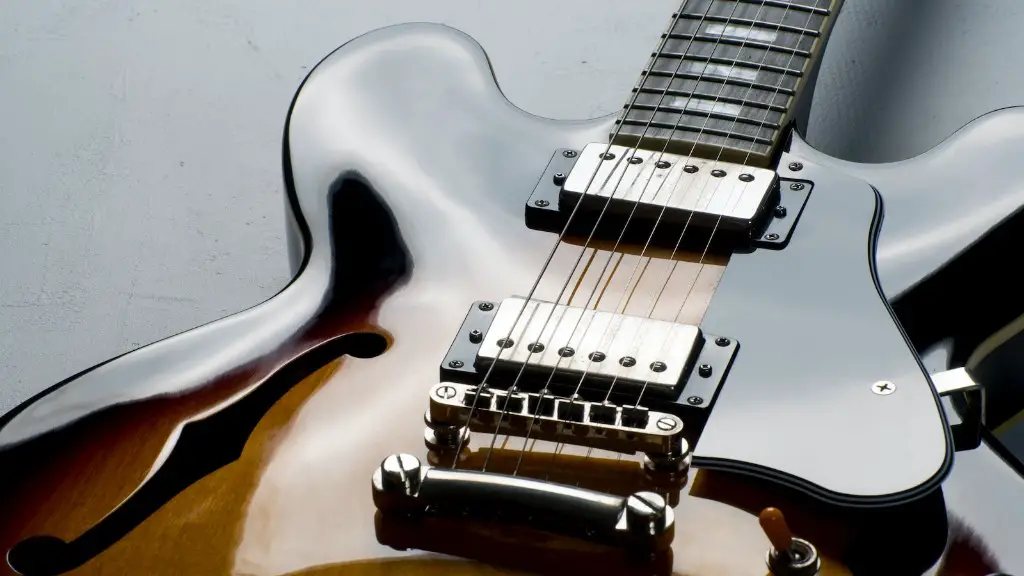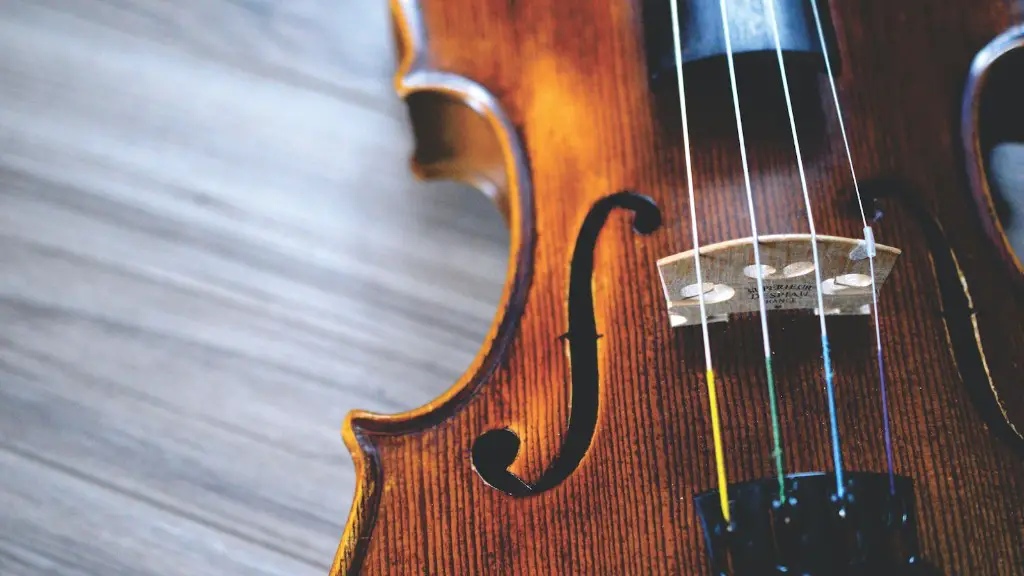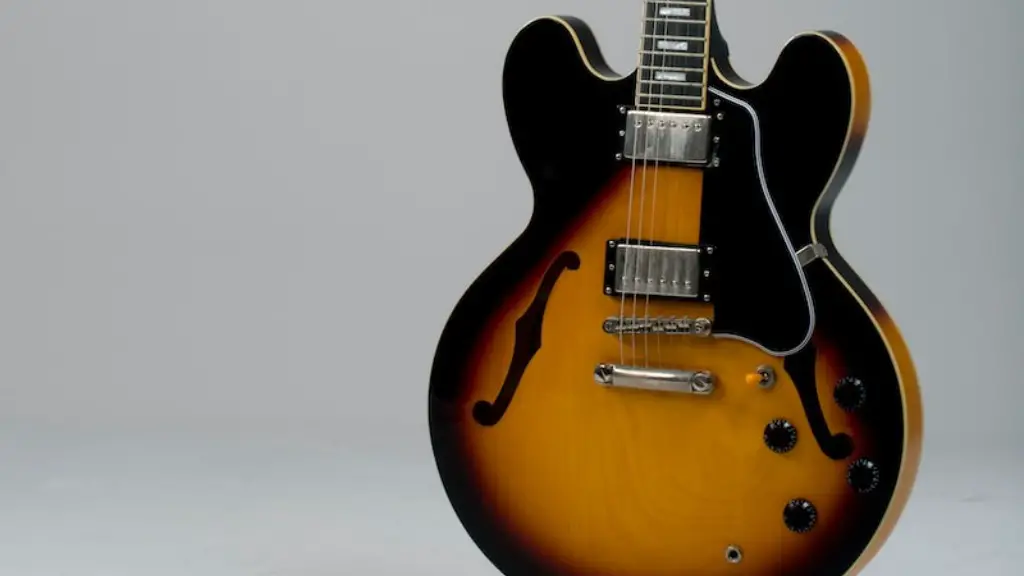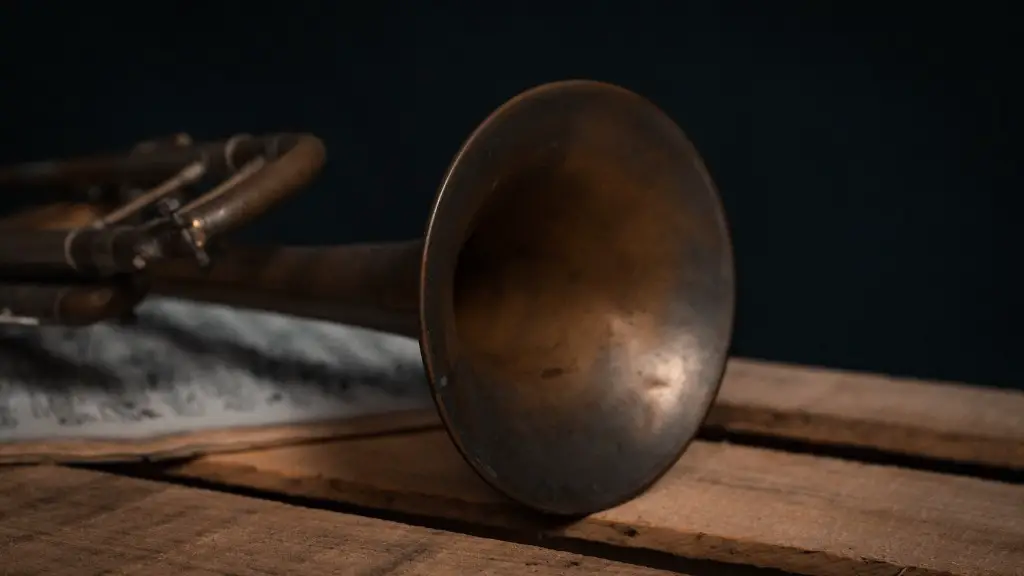The electric violin is a unique and versatile instrument that has become increasingly popular in recent years. It is a type of violin that produces sound without the need for acoustic amplification. Instead, it utilizes electronic components and amplification systems to produce a louder, more powerful sound than its traditional counterparts. The electric violin can be used to play a variety of musical styles, from classical to rock and jazz.
The electric violin typically consists of four main components: the strings, pickups, amplifier, and output device. The strings are made of metal or synthetic materials and are connected to the bridge of the instrument. The pickups detect the vibrations of the strings and convert them into an electrical signal, which is then sent to an amplifier where it can be boosted or altered before being sent to an output device such as headphones or speakers.
The amplifier allows for tone control by adjusting the volume, bass, treble and other attributes. It also allows for effects such as distortion and reverb to be added to create a more unique sound. Finally, the output device allows you to hear your music in whatever environment you choose. By combining these different components together, you can create your own unique sound.
How Does an Electric Violin Work?
An electric violin is a string instrument that uses electrical amplification to produce sound. It is similar to an acoustic violin, but instead of relying on the instrument’s natural acoustic properties, it uses a pickup system to detect and amplify the sound of the vibrating strings. The pickup system can be either magnetic or piezoelectric, depending on the type of electric violin. Magnetic pickups use magnets to detect the vibration of the strings while Piezoelectric pickups use crystals to detect vibration. Once the strings are picked up by the pickup system, they are amplified through an amplifier and speaker, allowing the sound to be heard much louder than it would be without amplification.
Electric violins also have other features such as a volume knob for adjusting the loudness of the output, and a tone knob for adjusting the timbre of the sound. Some models also have built-in effects such as tremolo, chorus and reverb that allow musicians to create interesting sonic textures in their music.
Electric violins are incredibly versatile instruments that can be used in many different styles of music such as classical, jazz, rock, blues and pop music. They are often used in live performances where their amplified sound is needed to cut through an ensemble or larger band setting. With so many features and applications available for electric violins, they can truly be used by any musician looking to explore new sonic possibilities with their playing!
Advantages of Using an Electric Violin
The electric violin has many advantages over traditional violins. One of the main advantages of using an electric violin is its convenience. Electric violins are lightweight, portable instruments that do not require tuning or any other type of maintenance. This makes them ideal for musicians who are always on the go and need a quick and easy way to practice or perform. Additionally, electric violins can be connected to amplifiers and other sound equipment, allowing musicians to control their sound. This allows for a greater range of sound possibilities than traditional acoustic violins.
Electric violins also offer a great deal of versatility in terms of playing styles and genres. Electric violins can be used to produce a wide variety of sounds, from classical music to rock music, as well as many other genres in between. This makes them popular with musicians who need an instrument that can adapt easily to different styles of music. Additionally, many electric violins come with a built-in effects processor, which allows players to experiment with different sounds and create their own unique soundscapes.
Finally, electric violins are much more affordable than traditional acoustic instruments, making them a great option for beginners or those looking for an inexpensive way to get started playing the violin. They also require less upkeep than traditional instruments since they don’t need regular tuning or maintenance like acoustic ones do. This makes electric violins great options for students learning how to play the violin or casual players who don’t want to take on the responsibility of caring for an expensive acoustic instrument.
Disadvantages of Using an Electric Violin
Electric violins come with a few drawbacks that may make their use difficult for beginners. Firstly, electric violins are more expensive than acoustic violins, and may not be within everyone’s budget. They also require the use of an amplifier and cables, which can add to the cost. Moreover, electric violins can be quite heavy due to the battery and amplifier they require, making them difficult to transport or play in certain venues. In addition, electric violins require regular maintenance and upkeep to keep them in proper working condition. Lastly, electric violins do not produce a natural sound as acoustic violins do – instead they often sound more artificial or synthetic. This may be off-putting for some players who are looking for a more authentic sound.
Overall, electric violins have the potential to produce great results in the right hands, but their cost and upkeep can be prohibitive for some players.
Parts of an Electric Violin
The electric violin is a unique instrument that has many distinct parts. It consists of the body, neck, bridge, tuning pegs, tailpiece, strings, pickups, and controls. The body is the main support structure of the instrument and holds all other components together. The neck is a long thin piece that connects to the body and holds the strings in place. The bridge sits between the neck and body and helps to transfer sound from the strings to the pickups. Tuning pegs are located at one end of the neck and allow players to adjust string tension. The tailpiece anchors the strings at the bottom of the instrument and helps to keep them in place. Strings are made from metal or synthetic materials and vibrate when plucked or bowed. Pickups are electromagnetic devices that capture vibrations from strings and convert them into electrical signals for amplification. Finally, controls such as volume knobs and tone switches enable players to shape their sound according to their preference.
Overall, each part plays an important role in producing a rich sound on an electric violin. With proper care and maintenance, these parts can help create beautiful music for years to come!
Types of Electric Violins
The electric violin is a modern instrument which has evolved from the traditional acoustic violin. It is classified into three main types: the solid body electric violin, the hollow body electric violin and the hybrid electric violin. The solid body electric violin is typically made of wood, with a solid core and metal strings. It produces a bright sound with good sustain and clarity. The hollow body electric violin has a hollow wooden body, allowing for more resonance and volume. The hybrid electric violin combines elements of both the solid body and hollow body designs, offering greater versatility in sound. All of these types of electric violins offer unique playing styles and tonal options, allowing for greater creativity when playing music.
For those looking to explore new sounds, an important factor to consider when selecting an electric violin is its pickup system. Pickup systems are essential for capturing and amplifying the instrument’s sound. Different pickup systems have different features that can affect tone, such as single coil pickups or humbucking pickups, which provide different levels of warmth or brightness in the tone.
Electric violins can also be designed with a variety of effects, such as reverb or chorus pedals. These effects can be used to shape your sound for a more dynamic performance experience. With so many options available today, it’s easy to find an electric violin that’s perfect for you!
How to Select the Right Electric Violin
Selecting an electric violin can be a daunting task. There are many factors to consider such as size, design, and sound quality. The first thing to consider is the size of the violin. Electric violins come in different sizes, so it’s important to find the one that is most comfortable for you. You should also take into account the design and features of the electric violin. Some models have additional features like built-in effects, while others may have more traditional designs.
The most important factor when selecting an electric violin is sound quality. You should look for a model with good tone, volume control, and sustain capabilities. You should also try playing different models before you make a final decision to ensure you’re getting the best possible instrument for your needs. Make sure you check out all of your options before making a purchase; some models may offer better sound quality than others. Take your time and do your research before making a final decision.
Final Words
An electric violin is a modern instrument that offers musicians the same sound qualities as an acoustic violin, but with the convenience of electronic amplification. Electric violins can be used in a variety of musical genres, from classical to rock and roll, and they can be used to create a wide range of sounds. To produce its sound, an electric violin uses an electric pickup to convert the vibrations of its strings into electrical signals which are then sent through an amplifier and speaker system. This allows for greater control over the sound in terms of volume, tone and effects.
In conclusion, electric violins provide musicians with greater flexibility and control over their sound, allowing them to explore a wider range of musical styles without having to compromise on quality or tone.





